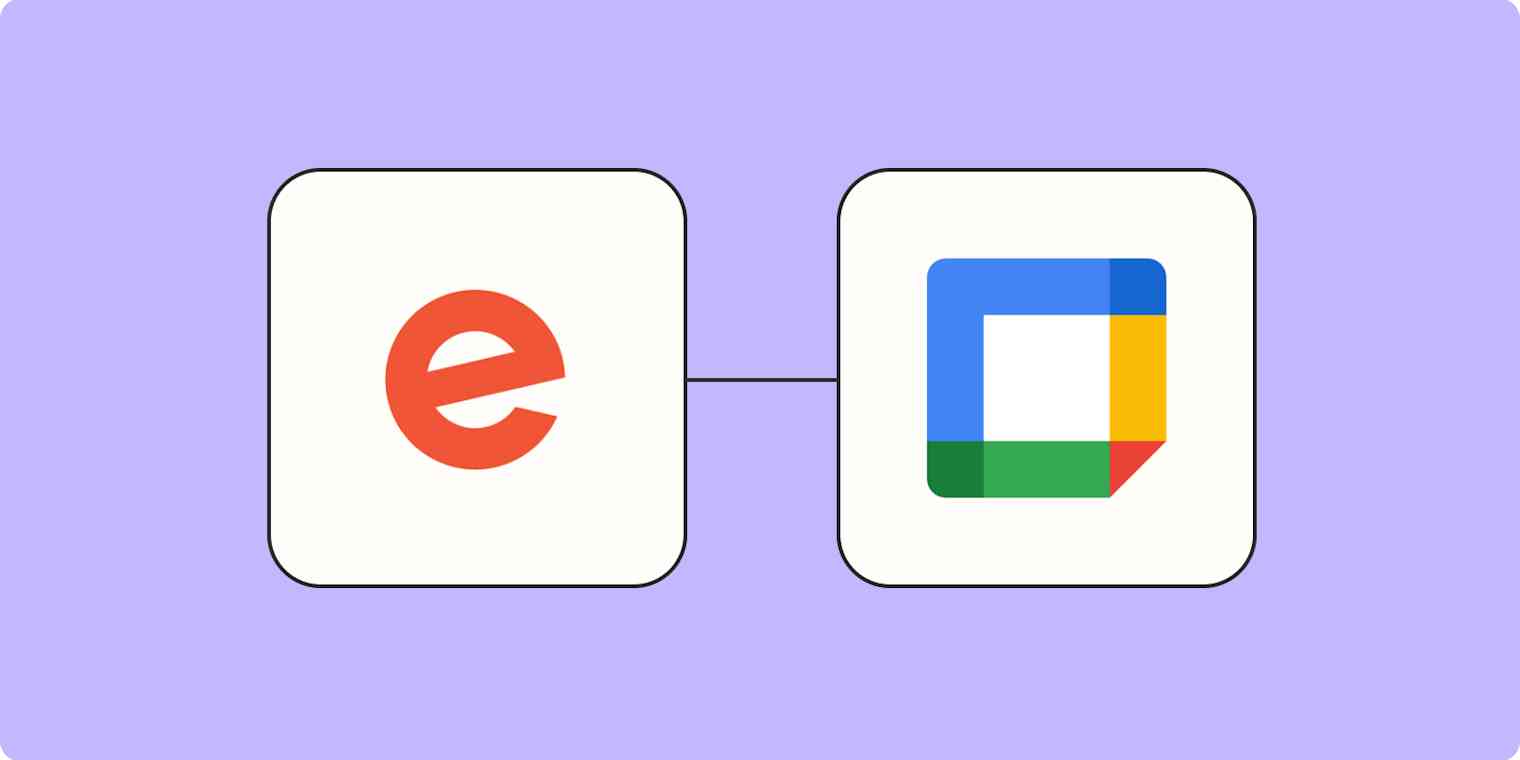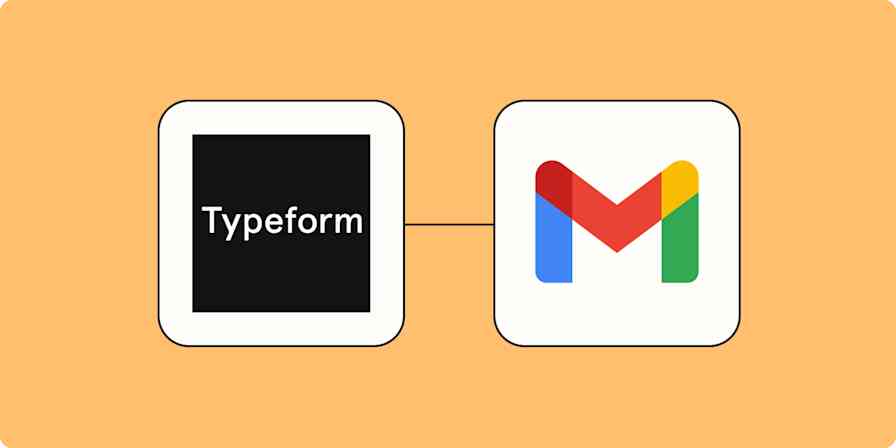You likely use Eventbrite to manage your events and tickets, but you probably also have a calendar app where you keep track of things like meetings and appointments. Keeping two calendars can be a recipe for disaster—it only takes one missed event to ruin your day.
Fortunately, there's an easy way to keep all of your calendars in sync without remembering to copy and paste events between apps. With a Zap—Zapier's word for our automated workflows—you can automatically add all new Eventbrite events to your Google Calendar of choice. Keep your calendar wrangled without adding any extra time to your day. Here's how.
New to Zapier? It's workflow automation software that lets you focus on what matters. Combine user interfaces, data tables, and logic with 6,000+ apps to build and automate anything you can imagine. Sign up for free.
Connect Eventbrite with Google Calendar
Zapier lets you create automated workflows called Zaps, which send your information from one app to another. You can create your own Zap from scratch without any coding knowledge, but we also offer quick templates to get you started.
If you'd like to start with a template, click on the Zap template to go to the Zap editor. You'll need to create a Zapier account if you don't already have one. Then, follow the directions below to set up your Zap.
Set up your Eventbrite trigger
First, set up your trigger—the event that starts your Zap. If you're using the Zap template, the trigger app and event will already be selected for you. Otherwise, search for and select Eventbrite as the trigger app and New Event as the trigger event. Click Continue.

Next, connect your Eventbrite account, if you haven't already, then click Continue.
Now, choose the Organization that you want to use in Eventbrite, and click Continue.

Now you'll need to test your trigger step. Before doing this, make sure you have at least one event added to your organization in Eventbrite. Zapier will use this information to set up the rest of your Zap. Once you have at least one event, click Test trigger.
Zapier will pull in the latest data from Eventbrite. Choose one of the events that you want to use, then click the Continue with selected record button.
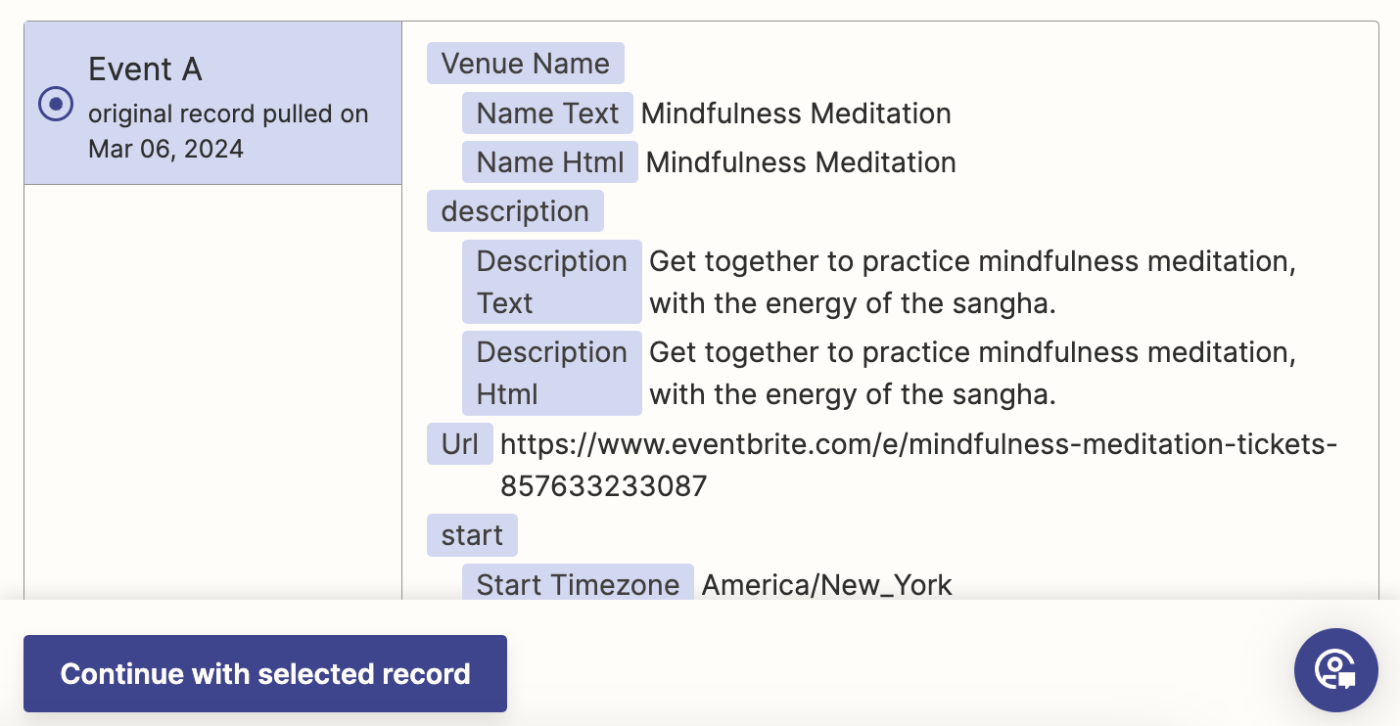
And that's it for the trigger. We can now move on to setting up the Google Calendar action.
Set up your Google Calendar action
Now it's time to set up the action—the event your Zap will perform once it's triggered. If you're using the Zap template, these will already be selected for you. Otherwise, search for and select Google Calendar as your action app and Create Detailed Event as your action event. Click Continue.

Next, sign in with your Google Calendar account, if you haven't already, then click Continue.
Now, it's time to customize the action. First, select the appropriate calendar in the Calendar field.
Then customize the Summary and Description fields. If you're using the Zap template, the name of the Eventbrite event will already be added to the Summary field and the event description will be added to Description. You can add different data from your Eventbrite step by clicking in the field and selecting the data you'd like to use from the Insert Data dropdown. You can also add static text.
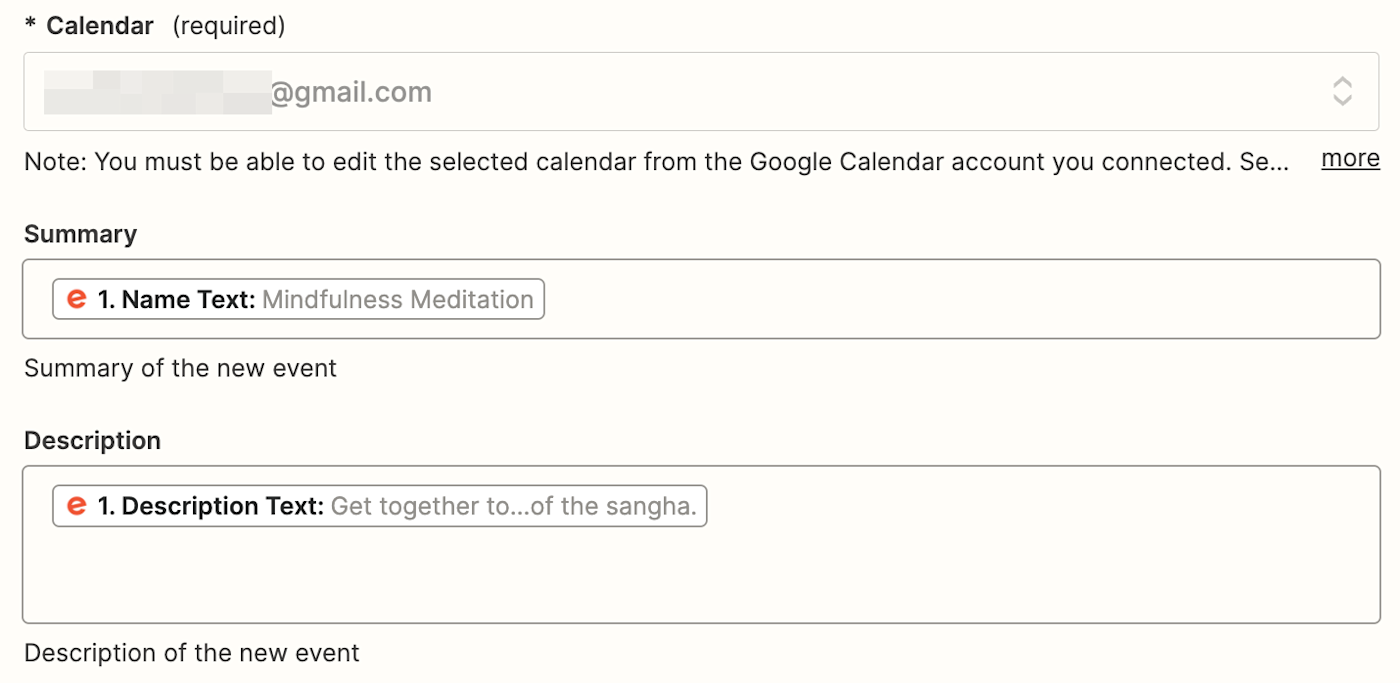
If this is a physical event and you've added the address to the Eventbrite event, you can choose to add the Venue Address data to the Location field. Next, make sure to add Start Local to the Start Date & Time field and End Local to the End Date & Time field. After everything is set, click Continue.
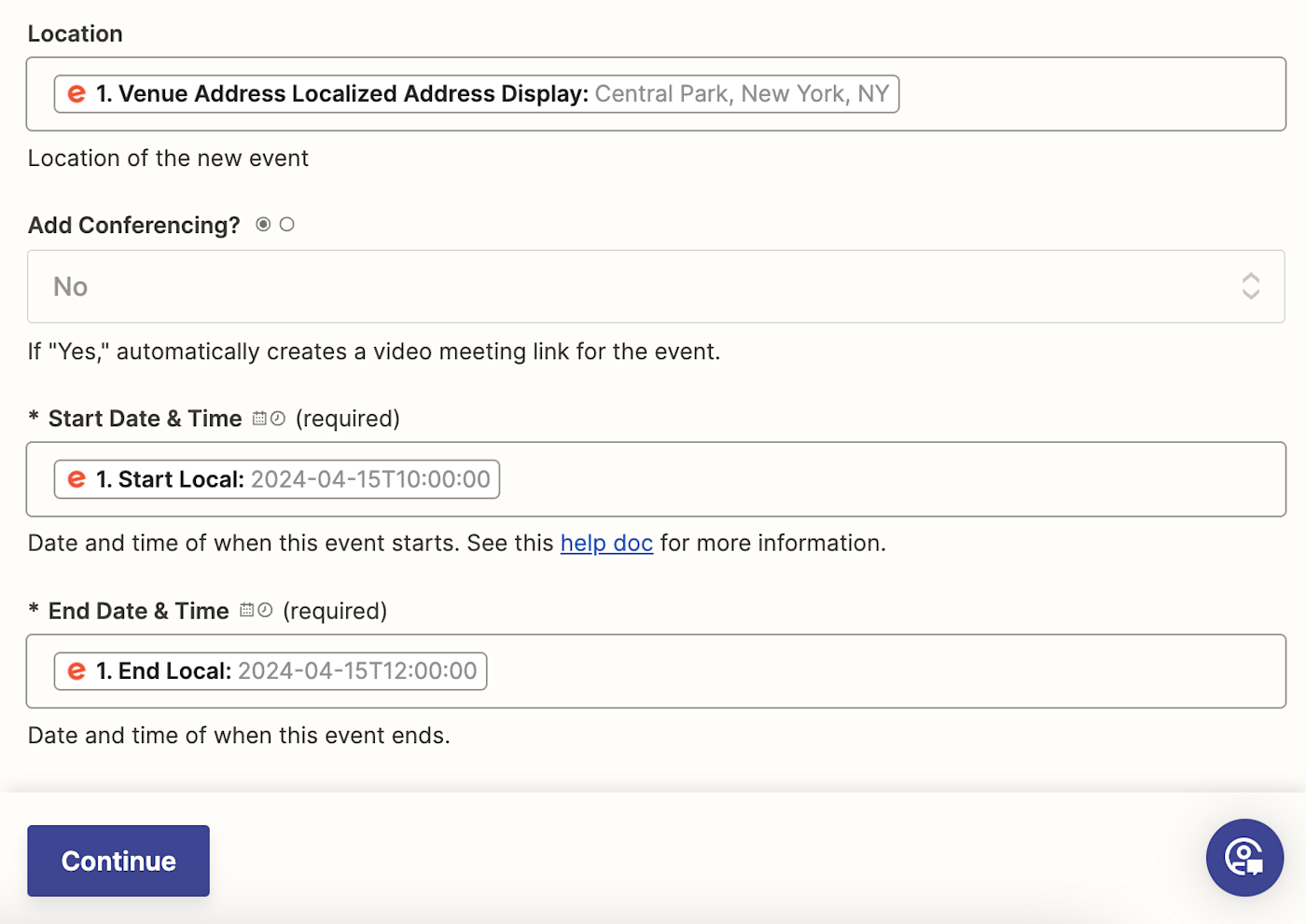
Finally, it's time to test your Zap. Click Test step, then open Google Calendar to see if you have a new event in your calendar. This is what our test looked like:
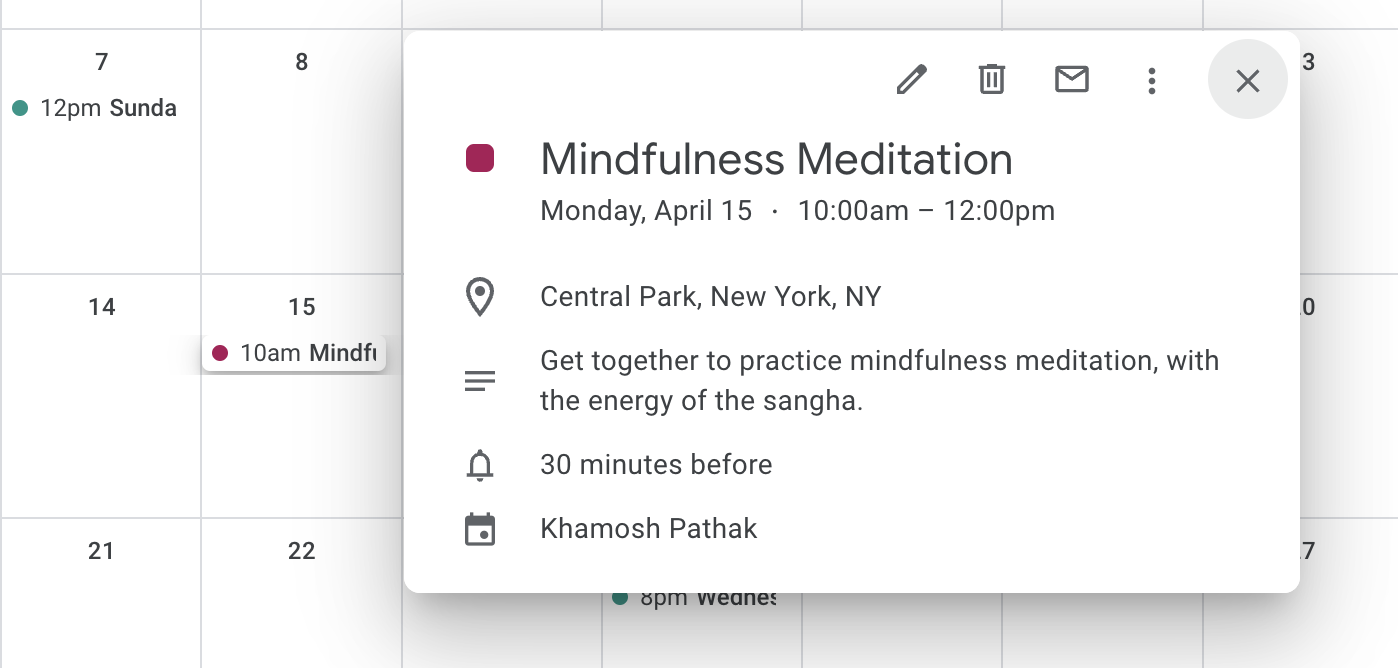
And that's all there is to it. If everything looks right, you're now ready to use your Zap. Now, every time you add a new event to your Eventbrite organization, it will automatically show up in your Google Calendar.
